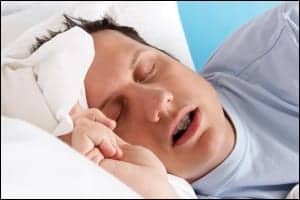The cascade of damage that sleep apnea unleashes on an individual is breathtaking. The sleep-breathing disorder has been linked with congestive heart failure, diabetes, depression, stroke, and all-cause mortality. The increased risk of any one of these comorbidities should be enough to compel patients to use sleep apnea therapy. But too many times, these future abstractions cannot overcome the day-to-day reality of the perceived inconvenience or side effects of therapy.
Like with other chronic illnesses, the patient struggles with the immediate versus the long-term. In real time, patients may only see that the CPAP leaves a strap mark on their face or that the oral appliance is inconvenient because it has to be cleaned. The long-term consequences of nonadherence never make it into their view, at least not until it is too late.
In the face of this dichotomy, clinicians have the sway to make the immediate reality more pressing on a personal level for each patient. While you can’t easily model how the patient’s arterial walls are stiffening, you can show—not simply tell—the patient how their sleep disorder is impacting them nightly. Using evidence self-provided by each patient is key. Here are several options.
Request the patient download a snore-recording smartphone app, then listen to the recording before or during their appointment. A 2016 study on sleep apps notes, “Although the apps are not intended for screening, its use in snoring identification in specific populations may be useful. Single patients who do not have a consistent bed partner may not be aware of their snoring.”1 Some apps provide an estimate of how loud the snoring is; for example, SnoreLab uses a scale of “quiet” to “epic.” Is the patient truly OK with “epic” snoring when out-of-town guests are staying overnight in the spare bedroom?
Caveats, of course, include that not all patients with sleep apnea snore and that not all sleep apnea treatments are efficacious for snoring. But for patients who snore as a symptom of sleep apnea, this is a powerful tool.
For patients who undergo in-lab polysomnography (PSG), show them an excerpt of their sleep study video. “People who watched themselves gasping and struggling to breathe with sleep apnea used their CPAP machines 3 hours more per night than those who saw no video, and nearly 2 and a half hours more than those who watched a video of another patient with sleep apnea,” said Mark Aloia, PhD, an author of the study whose preliminary results were showcased at SLEEP 2017, in a release at the time.2
Unfortunately, for patients being tested at home, there is no video recording. This is when an alternative personalization such as the snoring app is particularly useful.
For dentists and physicians who work with dentists, utilize relevant imaging technologies not only for screening and treatment workflows, but also as patient education tools. Read “4 Dentists Explain Why Intraoral Scanners Make Financial Sense in Their Practices” for inspiration on how an intraoral scanning for impressions may also allow the patient to see comorbidities of their sleep apnea, such as sleep bruxism.
Though clinicians visualize the full picture of damage wrought by sleep apnea—past, present, future, and even across populations—playing up the personalized immediate evidence to patients who need that extra motivation may save patients in both the short- and long-term.
Sree Roy is editor of Sleep Review.
References
1. Ong AA, Gillespie MB. Overview of smartphone applications for sleep analysis. World J Otorhinolaryngol Head Neck Surg. 2016 Mar;2(1):45–9.
2. Cartwright A, Depew A, Burleson A, et al. Use of a personalized video to enhance PAP adherence: preliminary report from a randomized clinical trial. Sleep. 28 April 2017;40(suppl_1):A190.





